How to transplant lavender?

Not every site will love lavender, and not all growers will be able to handle this flower. A beautiful, fragrant, commercially demanded, but wayward flower requires delicate handling and fulfillment of all conditions. And a transplant can be both happy for the plant and a failure.
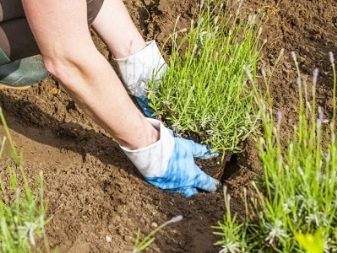

The need for a transplant
Not everyone knows that lavender is a medicinal plant. Essential oil is obtained from it, teas are made with it, which are very useful. The bushes look beautiful when they are well-groomed, but the overgrown bushes are not at all like those incredible lavender fields of Provence. Therefore, lavender must be transplanted.
A transplant request is objective when:
- plant growth has noticeably slowed down;
- the soil is depleted;
- the bush looks sloppy, shapeless due to overgrowth;
- the flower needs to be moved to another place, because it should be released, or these are the ideas in landscape design.
If there is some kind of obstacle in the soil, for example, a stone, and the root of the plant rests against it, it will simply stop growing. The lavender root cannot go around a stone or something like it. To avoid the death of the bush, a transplant is also needed. You can also transplant lavender for the purpose of rejuvenation.
And if the bush is large, so it needs to be divided by multiplying the exotic: after all, planting material, if you buy it somewhere, is not cheap.

Timing
The main condition is no frost. This is not just risky, it is often a sure death for the plant. Therefore, it is better to plan a transplant for the summer, but you can do it in early autumn or as early as late spring. However, summer is still better, in July it will be optimal. And the level of soil moisture at this time is exactly what lavender needs. All months are indicated with the expectation that the disembarkation takes place in the middle lane. In the south, time can be shifted back a little, in colder regions - forward.
By the way, the level of soil moisture is really critical, but this mainly concerns only that lavender that propagates by cuttings. If it is decided to transplant the plant in the fall, the bushes will take root better, will be stronger and more stable. But only with the condition of a competent approach. The risk of root freezing in early autumn is the lowest.

A place
A capricious plant will not tolerate suffering, it needs comfortable conditions. These should be areas where the sun's rays freely walk, and the darkening there is moderate. It is impossible for the soil to be too wet, its acidity level should not be high. Even before planting, lime or wood ash should be added to the ground if the soil is to be deoxidized. And to loosen the soil, compost is usually added, which also feeds the soil well.
It is unlikely that something will come of it if it is decided to transplant the bush into the shade: this will cancel flowering as such. Lavender growth will also slow down. The soil should not be heavy, and the optimal soil for the plant is sandstone. Sandy loam and loamy soils are also good. Alkaline, with good drainage, moisturized (in moderation) - that's what lavender will like. By the way, you can also transplant a flower from a pot. It's not always easy, but real.
And in order for lavender to take root well in a new place, you need to prepare the following inventory for the procedure: pruner, pitchfork, shovel, watering can and bucket, scoop. A shovel will help to form the correct planting hole, a pitchfork will do an excellent job of digging up small lavender bushes, a pruner will cut dry or broken branches, a bucket and a watering can will help dissolve and apply the necessary fertilizers to the ground.
And with a scoop it is convenient to trim the walls of the planting hole and add earth to the lavender roots.
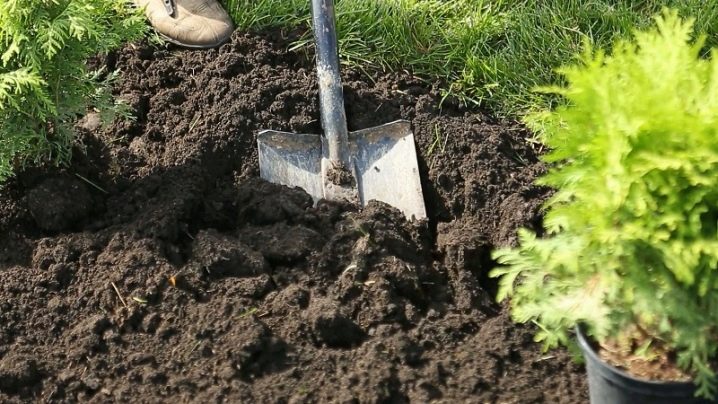
Soil preparation
If the soil is very wet or very heavy, it is almost impossible for lavender to take root there. And if the groundwater is also close to the site, it is urgent to organize a reliable drainage layer. For this, they usually use concrete, expanded clay, broken brick: in a word, something that effectively removes water.
In the land where it is planned to transplant lavender, the acidity level must be measured. Ideal values are 6.5-8 pH. Sour soil is neutralized with limestone or wood ash. If the land does not correspond to the level of sandstones at all, it is worth bringing river sand, it should be the same as the original soil (specifically for lavender). For loosening, compost is introduced into the ground, and the soil will receive nutrition with it too.


Step by step process
In addition to preparing the soil, you should also prepare the bush itself, which is awaiting transfer to another place. Shrub pruning is a must at this time. The roots are cut by 15 centimeters, and then they can go into a pink manganese solution or potassium humate, diluted according to the instructions. This is a good time to improve root formation and ensure disinfection.
Clay talker perfectly strengthens the root system. To make it, you will have to do the following:
- take 1 kg of manure, 10 liters of water and 1 sachet of "Kornevin" (or another similar rooting agent);
- add a few handfuls of clay so that the composition still remains liquid, but when you dipped your hand into it, the clay lay in an even layer on the skin;
- 1 tablet of "Heteroauxin" is also added there.
And in this mixture, you need to lower the plant, leaving it to dry in it for 30 minutes. This process better prepares the capricious lavender for transplanting.
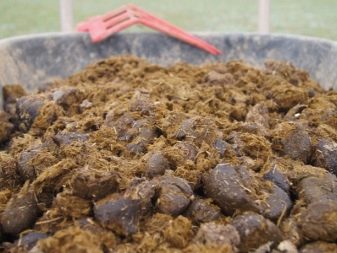

Now let's talk about how the transplant takes place.
- The plant must be delicately dug up, so that it turns out to be with an earthen lump. This will minimize damage to the rhizome.
- It is better to dig in lavender deeper, about 50 centimeters. It is worth digging in a circle around naturally standing stems. Then you need to very gently shake off the ground from the roots in order to understand if there are any dried parts, sick ones.
- If an adult bush is very large, you can divide it (at the same time, "crank" the propagation of lavender). The main thing is that at least 2-3 growth points remain in each division. But this does not always need to be done, because lavender does not easily tolerate division by a bush.
- An earthen mound is poured into the center of the planting hole already dug in a new place, a seedling is installed in it. It is important to bury the lavender to the same depth that it had in its previous place.
- The roots are covered with soil, after which the ground must be thoroughly watered. You can also add soil mixtures, remembering to compact it, and they do this until the hole is filled.
- The trunk circle of the transplanted bush must be covered with hay or dry soil.
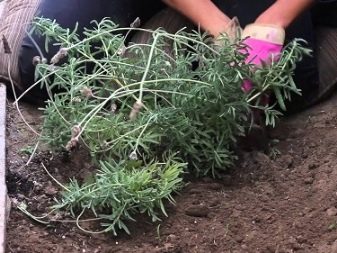
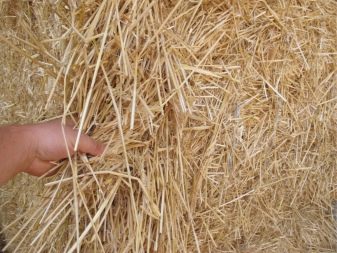
Complex fertilizer can be added to the planting pit in advance. If the bushes have recently been transplanted into the garden in open ground, they need a winter shelter. The plants are still too weak to withstand frost. The roots will be covered with dry peat, while on top it is better to cover the lavender with spruce branches. And you can also build a compact frame, cover it with non-woven material in two layers (or something else airtight).
The transshipment method, which is as gentle as possible in relation to the plant, is also not bad. You also need to look so that the weather for the transplant is favorable: not hot, without the blinding sun, without strong winds. It happens that the bush is mature, but poorly formed, lavender does not look blooming in full force. In this case, strong pruning is sometimes used, although this method is considered stressful for the plant. It is best done in the spring, until the sap begins to flow, and heavy pruning is usually combined with sanitary pruning.
And lavender is sometimes transplanted at home, that is, in a pot. It should grow on the windowsill by the lightest window. Drafts in this place must be excluded. The soil under the plant should be moist, but not wet. The first weeks you need to water the flower with "Zircon", smoothly reducing its concentration to zero.But for the winter, homemade lavender should go to a cool, but bright place.
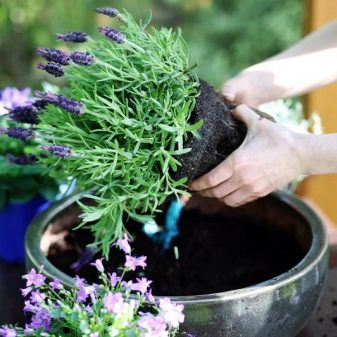

Possible problems
Lavender can begin to dry out if watering problems occur. It is enough to water it once a week in the heat, and once every two weeks if it is cold. She is unpretentious to water, "drinks" a little, and that is why some plant breeders have a feeling that watering should be very rare. You need to keep a balance. What else can be unpleasant:
- feeding with nitrogen and organic matter is a mistake, you need to avoid such fertilizers, but potassium compounds well stimulate the growth of seedlings;
- if the lavender has not taken root, it is likely that the wrong transplanting time was chosen or the plant was dug up incorrectly, the root was damaged;
- the plant dies: unfortunately, this happens even if everything seems to have been done correctly (transplanting is stressful for lavender and there is always a risk of bushes dying).
If lavender is not pruned regularly, the crop will go bald. And now it will hardly be possible to fix it. Therefore, you do not need to be afraid of pruning, it is for the benefit of the plant. It is also impossible to overfeed the flower, because it is sensitive to this and will soon begin to "fatten", that is, grow excessively lush, because of which the flowering will be, figuratively speaking, lazy. Such flowers are not particularly persistent, they are afraid of any negative external influences.
It is difficult to grow lavender on the site, you need a lot of knowledge, and you need to be prepared for possible mistakes, slow flowering. Therefore, initially you can experiment "in small genres", that is, growing lavender in a pot on a windowsill.








































































































The comment was sent successfully.